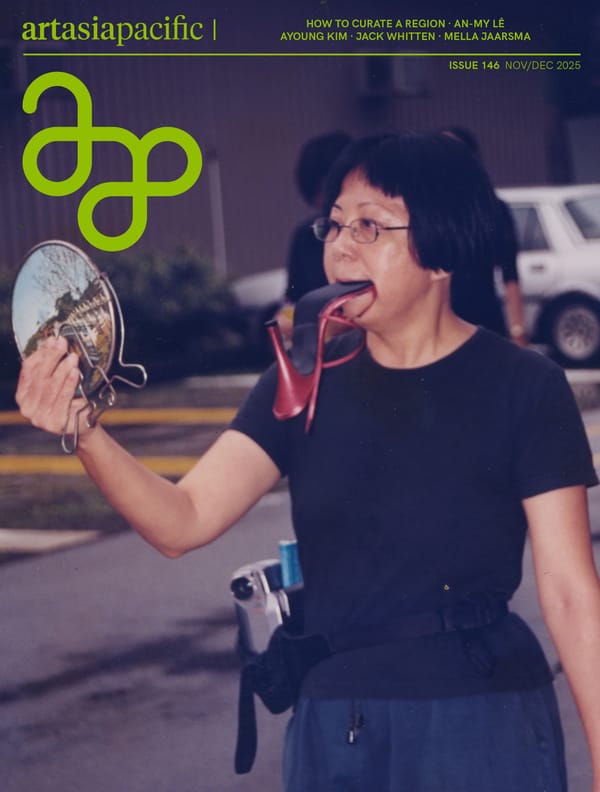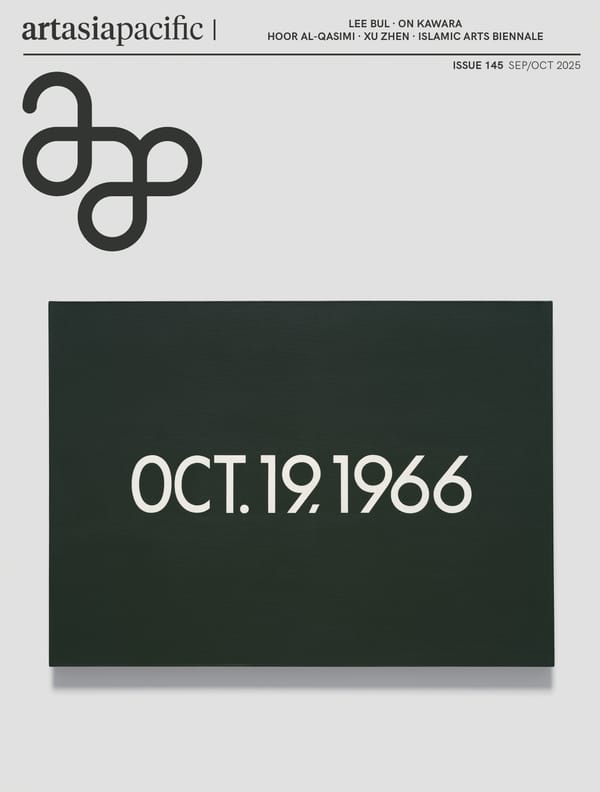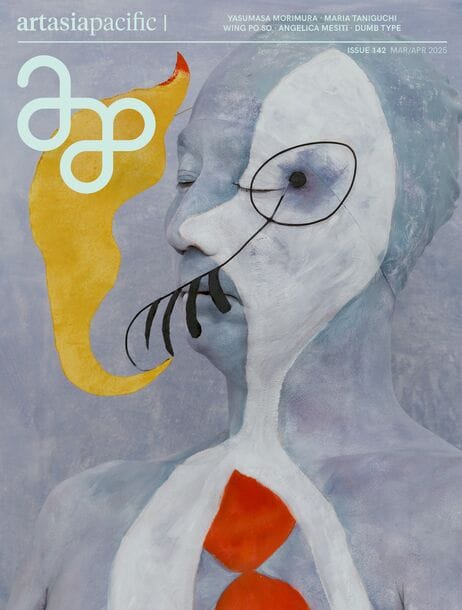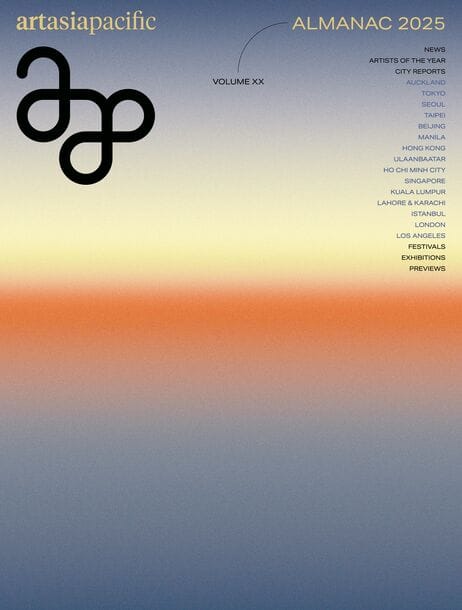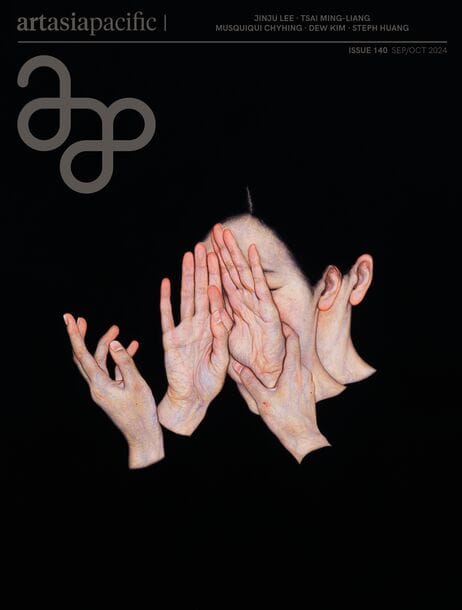
Editor's Letter
Reports
- Whispering Gallery: Nipping at the Heels By dt
- The Point: Letter to Young Artists By Ahmet Öğüt
- Previews: Embodied Adventures By The Editors
- Dispatch: Shanghai By Hutch Wilco
- News Roundup 129: Controversy, Career Moves, Public Domain By The Editors
- Documenta Fifteen Faces Accusations of Antisemitism By The Editors
- Art Fair Report: Pushing Back By The Editors
- One on One: Rushdi Anwar on Mulla Sadra Shirazi By Rushdi Anwar
- Auction Report: The Great Plateau By The Editors
- New Currents: On Essence By Pamela Wong, Nicole M. Nepomuceno, Chloe Chu
Essays
Profiles
Features
- Up Close: Jennifer Tee By CHLOE CHU
- Up Close: Chu Chun-Teng By Pamela Wong
- Yuki Kihara: Trouble in Paradise By Nicole M. Nepomuceno
- Up Close: Tap Chan By HG MASTERS
- Nunelucio Alvarado: Sugar and Salt of Life By Portia Placino
- Ha Chong-Hyun: Method and Materiality By Andy St. Louis
- Inside Burger Collection: Elmgreen & Dragset By Kabir Jhala
Reviews
- Seoul: Hito Steyerl By Taeyi Kim
- Kathmandu Triennale 2077 By Niranjan Kunwar
- Tokyo: Chim↑Pom from Smappa!Group By Emilia Wang
- Manila: Pio Abad By Portia Placino
- Munich: Fujiko Nakaya By Chinnie Ding
- Istanbul: İpek Duben By Bala Gürcan
- Berlin: Shuang Li By Frances Arnold
- Blast from the Past By CHLOE CHU, HG masters, Peter Chung
- Hong Kong: emo gym By Peter Chung
